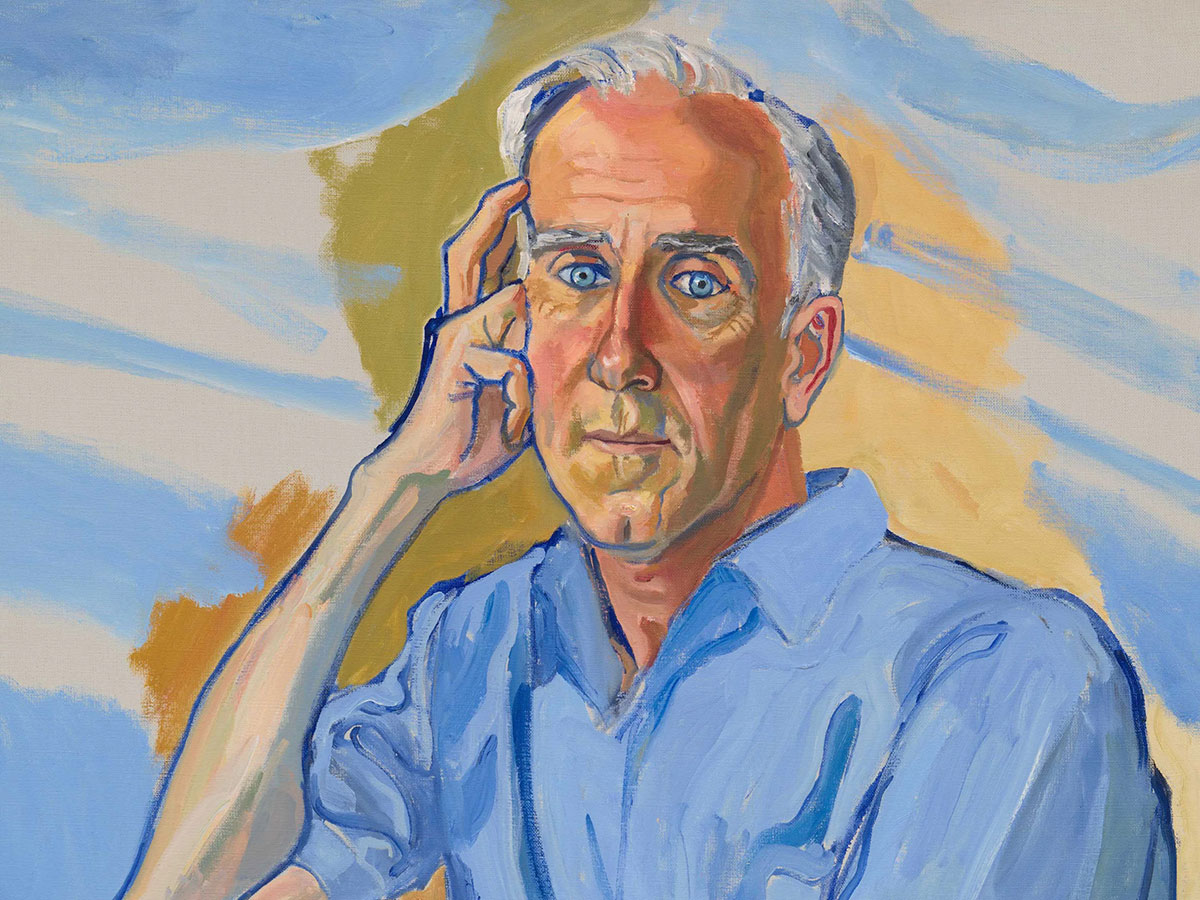PREVIEW: Alice Neel-Men from the Sixties
 As the avant-garde of the 1940s and 1950s renounced figuration, Neel developed her signature approach to the human body. Working from life and memory, she created daringly honest portraits of her family, friends, art world colleagues, writers, poets, artists, actors, activists, and more. Her paintings, which are forthright, intimate, and, at times, humorous, engage overtly and quietly with political and social issues.
As the avant-garde of the 1940s and 1950s renounced figuration, Neel developed her signature approach to the human body. Working from life and memory, she created daringly honest portraits of her family, friends, art world colleagues, writers, poets, artists, actors, activists, and more. Her paintings, which are forthright, intimate, and, at times, humorous, engage overtly and quietly with political and social issues.
By Efi Michalarou
Photo: David Zwirner Gallery Archive
Widely regarded as one of the foremost American artists of the twentieth century, Alice Neel is known for her daringly honest, humanist approach to the figure. The exhibition “Men from the Sixties” brings together a selection of significant paintings of men from the 1960s, a decisive decade in the development of the artist’s practice. In these years, her style evolved into the looser, more open compositions she would come to be known for in the later period of her career, while she also began to receive broader recognition for her work as an incisive artist and cultural figure. While Neel had been steadily painting and exhibiting her work since the late 1920s, it was during the 1960s that she began to gain critical acclaim and increasingly interact with major cultural figures, painting well-known artists, critics, and authors as well as activists and politicians. Ranging from depictions of men of personal or intellectual significance to Neel to those of anonymous individuals and acquaintances who interested her, the works on view present a nuanced examination of masculinity and attest to the artist’s commitment to capturing the character, emotions, and complexities of not only her sitters but also their era. “Randall in Extremis” (1960) is one of two Neel made of the aspiring artist Harrell Randall Bailey who worked as a security guard at The Metropolitan Museum of Art. In 1962, Neel met Hubert Crehan, a painter and art critic known for championing women artists. After sitting for Neel, he organized an exhibition of her paintings at Reed College in Portland, Oregon, and later wrote an article for ArtNews, “Introducing the Portraits of Alice Neel”—the first feature to be published in a national magazine. Also, Alice Neel created the portrait “Julian Beck” (1964), who was an artist, writer, actor, director, and the co-founder of The Living Theater—an experimental theater group that became known for its avant-garde productions—shows him with his sleeves rolled up, his pants wrinkled, and his hand poised as though he is about to speak. Using expressive brushstrokes, Neel deftly captures Beck’s bohemian nature and renegade spirit. Ivan Karp was an art dealer and owner of the SoHo-based OK Harris Gallery, which he opened in 1969 following his departure from Leo Castelli Gallery. Seated dynamically with his legs crossed and his head cocked to one side, in “Ivan Karp” (1965), Karp gazes directly at the artist, ultimately demonstrating the sense of trust and intimacy that Neel and her sitters shared. Neel began incorporating abstraction into the backgrounds of her paintings in the mid-1940s, however it was not until the late 1950s, and the 1960s especially, that the backgrounds of her paintings became increasingly abstract. Neel painted “Man from Fordham” (1965) after meeting the unnamed sitter during her exhibition at the eponymous university. Depicted in a three-quarter profile and a crisp white shirt, the man appears to be engaging with the painter, his lips slightly parted and his eyebrows arched. The background of the work, loosely depicting shadows on the wall behind the man, shows Neel experimenting with a mode of painting that contrasts with the detailed depiction of her sitter. “Richard” (1967) depicts Neel’s oldest son, Richard, sitting in the same blue and white striped chair in which she posed for her renowned nude “Self-Portrait” (1980). Richard was a recent graduate from Columbia Law School in New York, about 28 years of age at the time of this painting. Casually dressed in a t-shirt and underwear, Richard’s gaze is fixed on his mother in this intimate painting. “Felix Greene” (1969) is depicting the British journalist Felix Greene who worked for the San Francisco Chronicle during the 1960s and covered several communist countries. One of the first Western reporters to visit North Vietnam in the 1960s, he first went to China for the BBC in 1957. Neel made the present work, as well as a painting of Greene’s wife, while on a trip to visit Hartley and Ginny Neel in San Francisco. The end of the decade witnessed a shift in the wider culture from the perception of the artist as a rebel or loner to the notion of creative figures as celebrities or public personalities. Neel’s work charted this change, from her 1960 portrait of Harrell Randall Bailey to her famously revealing depiction of Andy Warhol, eyes closed and shirtless, in October 1970. Earlier in the year, her painting of the feminist writer, educator, artist, and activist Kate Millett had appeared on the cover of Time magazine in an issue dedicated to “The Politics of Sex,” signaling a new era that Neel was firmly placed to portray.
Photo: Alice Neel, Felix Greene, 1969, Oil on canvas, 50 x 34 inches (127 x 86.4 cm), Framed: 53 1/2 x 37 3/8 inches (135.9 x 94.9 cm), © The Estate of Alice NeelDavid Zwirner Gallery
Info: David Zwirner Gallery, 5–6/F, H Queen’s, 80 Queen’s Road Central, Hong Kong, China, Duration: 17/11-21/12/2022, Days & Hours: Tue-Sat 11:00-19:00, www.davidzwirner.com/



